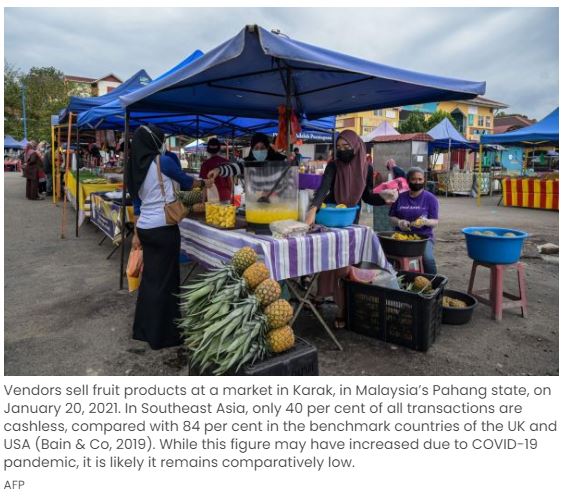How cloud banking can enhance financial inclusion across South-east Asia
Today, more than one billion people across Asia Pacific do not have access to formal financial services. Southeast Asia experiences particularly low levels of financial inclusion, with nearly three quarters of the population either ‘under-banked’, i.e. with limited access to financial services, or ‘unbanked’, i.e. completely excluded from the current financial services landscape.
The Philippines ranks among the lowest in Asia for financial inclusion, with only 34 per cent of Filipino adults holding a bank account. Less than half (49 per cent) of Indonesian adults are ‘banked’, however, while financial inclusion in Indonesia remains low, the country saw e-money transactions increase by 173 per cent in the year ending January 2020, indicating a keen appetite for digital financial services.
Conversely, high performing Asean countries including Malaysia and Thailand have relatively high rates of financial inclusion (85 and 82 per cent respectively), and Singapore has close to 100 per cent of its population banked. These countries need to lead by example in enabling financial inclusion across the region.
Drivers of financial inclusion
One of the key drivers of financial inclusion across Southeast Asia has been rapid change and technological innovation in the financial services sector. Technology innovations transforming the financial services landscape in Southeast Asia include new forms of online payment, such as eWallets, which have experienced phenomenal growth in the region, and other new digital banking products that incorporate AI (artificial intelligence), data analytics and cloud technology to provide a personalised customer experience, all via a smartphone.
In Vietnam, leading commercial bank MSB launched Vietnam’s first digital-only bank, TNEX, in 2020, specifically targeting the youth market of Millennial and Gen Z consumers (Vietnam’s Gen Z population is expected to reach 15 million by 2025). To attract and retain these customers, TNEX offers to simplify the lives of its customers, by channelling all financial requirements through one app, removing the need to use multiple apps. Impressively, TNEX offers Vietnam’s first free everyday bank for individuals and businesses.
Cloud banking technology, such as that used by TNEX, is more agile, significantly cheaper to implement, and enables rapid speed to market – with new products launched in weeks, rather than the years that traditional core banking technology requires. These key benefits allow banks to service customers much more cost-effectively, which in turn empowers them to offer services at a reduced cost (or, like TNEX, at no cost) to consumers. This means these banks are able to appeal a wider customer base, particularly those population segments that have been traditionally excluded from formal financial services.
Barriers to financial inclusion
Cash has been king across much of Southeast Asia for many generations, and while the Covid-19 pandemic did see an increase in cashless transactions globally, millions of people still have greater trust in cash than they do in digital. In Southeast Asia, only 40 per cent of all transactions are cashless, compared with 84 per cent in the benchmark countries of the UK and USA (Bain & Co, 2019). While this figure may have increased due to Covid-19, it is likely it remains comparatively low.
This continued reliance on cash is a significant barrier to financial inclusion, as, without official financial records, individuals and small businesses are not able to participate in the formal economy – they’re unable to take out a loan to grow their business or buy a house, and they have no access to lines of credit during times of hardship. This has had a particularly significant impact during the pandemic.
How can cloud technology help enable financial inclusion?
Innovative cloud-based financial products offered by fintechs and banks are changing the face of financial services across Southeast Asia. These products can be rolled out much faster – often in a matter of weeks – and at a greatly reduced cost compared with traditional banking products. They also offer greater flexibility and agility, meaning providers can respond swiftly to changing customer expectations and needs.
By removing the requirement for consumers to visit a branch to sign up and making products available via smartphone apps and online, these providers have bridged the gap between formal financial services and customers who have long been wary of financial institutions, particularly Millennial and Gen-Z consumers who expect to be able to manage their entire lives via their smartphones. The continued growth in adoption of cloud banking products and services across Southeast Asia needs to be encouraged and supported by regulators and governments across the region, which will ultimately enable financial inclusion for many millions of peTrsons.
The writer is the managing director, APAC, at Mambu, the pure SaaS banking platform.
Source: https://www.businesstimes.com.sg/asean-business/how-cloud-banking-can-enhance-financial-inclusion-across-south-east-asia


 Thailand
Thailand




